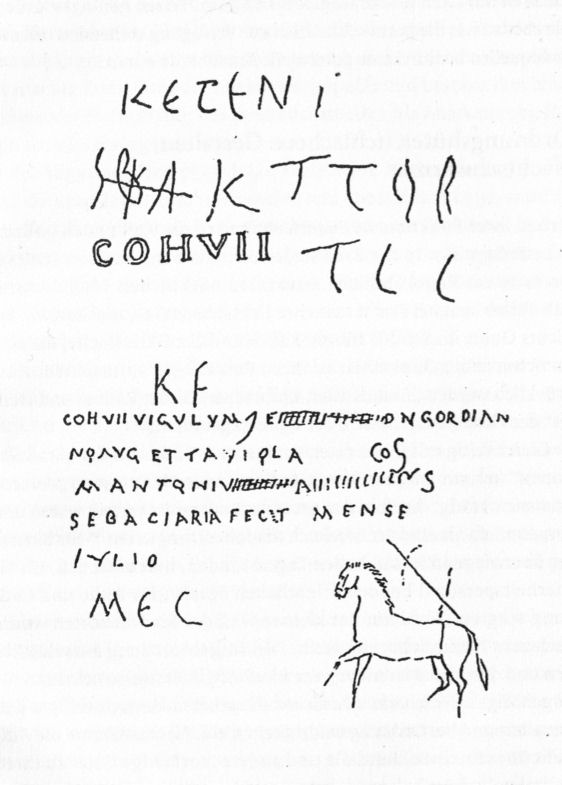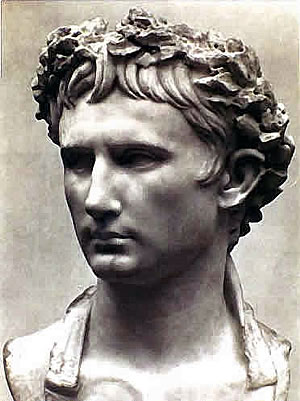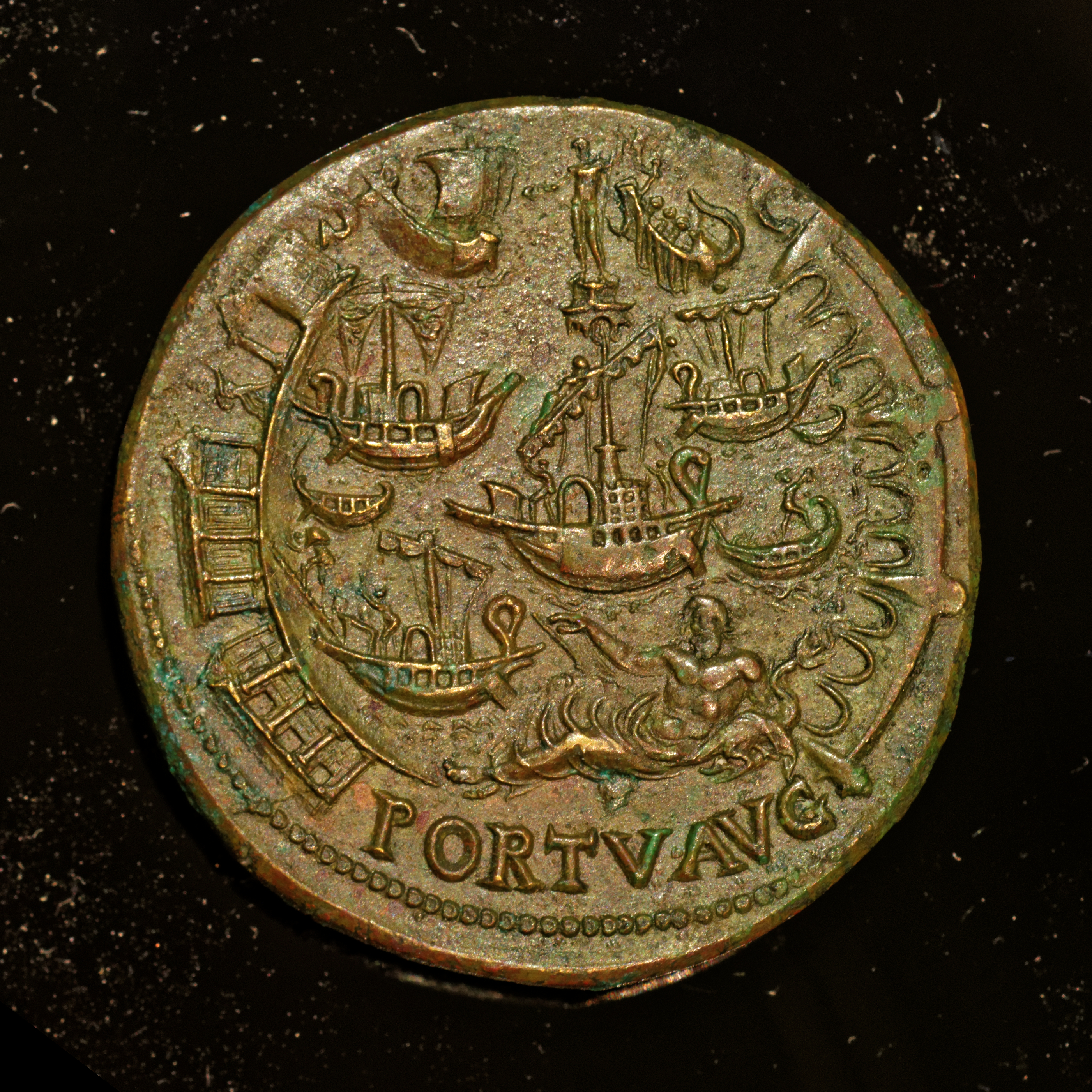|
Vigiles
The ''Vigiles'' or more properly the ''Vigiles Urbani'' ("watchmen of the City") or ''Cohortes Vigilum'' (" cohorts of the watchmen") were the firefighters and police of ancient Rome. History The ''Triumviri Nocturni'' (meaning ''three men of the night'') were the first men, being privately owned slaves, organized into a group that combated the common problems of fire and conflagrations in Rome. The privately operated system became ineffective, so in the interest of keeping himself and Rome safe, Augustus instituted a new public firefighting force called the ''Vigiles''. Augustus modelled the new firefighters after the fire brigade of Alexandria, Egypt. The Vigiles were also known by their nickname ''Spartoli'' or "little bucket fellows" which was given to them because of the buckets they carried water in, which were made of rope sealed with pitch. In AD 6, Augustus levied a 4% tax on the sale of slaves and used the proceeds to set up the new force. The first Vigiles units w ... [...More Info...] [...Related Items...] OR: [Wikipedia] [Google] [Baidu] |
Sejanus
Lucius Aelius Sejanus (c. 20 BC – 18 October AD 31), commonly known as Sejanus (), was a Roman soldier, friend and confidant of the Roman Emperor Tiberius. Of the Equites class by birth, Sejanus rose to power as prefect of the Praetorian Guard (the Roman imperial bodyguard), of which he was commander from AD 14 until his execution for treason in AD 31. While the Praetorian Guard was formally established under Emperor Augustus, Sejanus introduced a number of reforms which saw the unit evolve beyond a mere bodyguard into a powerful and influential branch of the government involved in public security, civil administration and ultimately political intercession; these changes had a lasting impact on the course of the Principate. During the 20s, Sejanus gradually accumulated power by consolidating his influence over Tiberius and eliminating potential political opponents, including the emperor's son Drusus Julius Caesar. When Tiberius withdrew to Capri in AD 26, Sejanus was left ... [...More Info...] [...Related Items...] OR: [Wikipedia] [Google] [Baidu] |
Police
The police are a constituted body of persons empowered by a state, with the aim to enforce the law, to ensure the safety, health and possessions of citizens, and to prevent crime and civil disorder. Their lawful powers include arrest and the use of force legitimized by the state via the monopoly on violence. The term is most commonly associated with the police forces of a sovereign state that are authorized to exercise the police power of that state within a defined legal or territorial area of responsibility. Police forces are often defined as being separate from the military and other organizations involved in the defense of the state against foreign aggressors; however, gendarmerie are military units charged with civil policing. Police forces are usually public sector services, funded through taxes. Law enforcement is only part of policing activity. Policing has included an array of activities in different situations, but the predominant ones are concerned with t ... [...More Info...] [...Related Items...] OR: [Wikipedia] [Google] [Baidu] |
Praefectus Vigilum
The ''Vigiles'' or more properly the ''Vigiles Urbani'' ("watchmen of the Rome, City") or ''Cohortes Vigilum'' ("Cohort (military unit), cohorts of the watchmen") were the firefighters and police of ancient Rome. History The ''Triumviri Nocturni'' (meaning ''three men of the night'') were the first men, being privately owned Slavery in ancient Rome, slaves, organized into a group that combated the common problems of fire and conflagrations in Rome. The privately operated system became ineffective, so in the interest of keeping himself and Rome safe, Augustus instituted a new public firefighting force called the ''Vigiles''. Augustus modelled the new firefighters after the fire brigade of Alexandria, Egypt. The Vigiles were also known by their nickname ''Spartoli'' or "little bucket fellows" which was given to them because of the buckets they carried water in, which were made of rope sealed with Pitch (resin), pitch. In AD 6, Augustus levied a 4% Roman Empire#Taxation, tax on the ... [...More Info...] [...Related Items...] OR: [Wikipedia] [Google] [Baidu] |
Equestrian (Roman)
The ''equites'' (; literally "horse-" or "cavalrymen", though sometimes referred to as " knights" in English) constituted the second of the property-based classes of ancient Rome, ranking below the senatorial class. A member of the equestrian order was known as an ''eques'' (). Description During the Roman kingdom and the first century of the Roman Republic, legionary cavalry was recruited exclusively from the ranks of the patricians, who were expected to provide six '' centuriae'' of cavalry (300 horses for each consular legion). Around 400BC, 12 more ''centuriae'' of cavalry were established and these included non-patricians ( plebeians). Around 300 BC the Samnite Wars obliged Rome to double the normal annual military levy from two to four legions, doubling the cavalry levy from 600 to 1,200 horses. Legionary cavalry started to recruit wealthier citizens from outside the 18 ''centuriae''. These new recruits came from the first class of commoners in the Centuriate Assembly ... [...More Info...] [...Related Items...] OR: [Wikipedia] [Google] [Baidu] |
Augustus
Caesar Augustus (born Gaius Octavius; 23 September 63 BC – 19 August AD 14), also known as Octavian, was the first Roman emperor; he reigned from 27 BC until his death in AD 14. He is known for being the founder of the Roman Principate, which is the first phase of the Roman Empire, and Augustus is considered one of the greatest leaders in human history. The reign of Augustus initiated an imperial cult as well as an era associated with imperial peace, the '' Pax Romana'' or '' Pax Augusta''. The Roman world was largely free from large-scale conflict for more than two centuries despite continuous wars of imperial expansion on the empire's frontiers and the year-long civil war known as the " Year of the Four Emperors" over the imperial succession. Originally named Gaius Octavius, he was born into an old and wealthy equestrian branch of the plebeian ''gens'' Octavia. His maternal great-uncle Julius Caesar was assassinated in 44 BC, and Octavius was named in Caes ... [...More Info...] [...Related Items...] OR: [Wikipedia] [Google] [Baidu] |
Roman Empire
The Roman Empire ( la, Imperium Romanum ; grc-gre, Βασιλεία τῶν Ῥωμαίων, Basileía tôn Rhōmaíōn) was the post- Republican period of ancient Rome. As a polity, it included large territorial holdings around the Mediterranean Sea in Europe, North Africa, and Western Asia, and was ruled by emperors. From the accession of Caesar Augustus as the first Roman emperor to the military anarchy of the 3rd century, it was a Principate with Italia as the metropole of its provinces and the city of Rome as its sole capital. The Empire was later ruled by multiple emperors who shared control over the Western Roman Empire and the Eastern Roman Empire. The city of Rome remained the nominal capital of both parts until AD 476 when the imperial insignia were sent to Constantinople following the capture of the Western capital of Ravenna by the Germanic barbarians. The adoption of Christianity as the state church of the Roman Empire in AD 380 and the fall of th ... [...More Info...] [...Related Items...] OR: [Wikipedia] [Google] [Baidu] |
Naevius Sutorius Macro
Quintus Naevius Cordus Sutorius Macro (21 BC – AD 38) was a prefect of the Praetorian Guard, from 31 until 38, serving under the Roman Emperors Tiberius and Caligula. Upon falling out of favour, he killed himself. Biography Macro was born in 21 BC at Alba Fucens, a Roman town at the foot of Monte Velino, situated on a hill just to the north of the Via Valeria in Italy. Inscriptional evidence from the ruins of this town reveal that, prior to becoming Praetorian prefect, Macro had served as ''Praefectus vigilum'', prefect of the vigiles, the Roman fire brigade and night watch. The date of this appointment and the length of his tenure are unknown.Sandra J. Bingham. The praetorian guard in the political and social life of Julio-Claudian Rome''. Ottawa: National Library of Canada (1997), p. 63. Macro was appointed Praetorian prefect by Tiberius after the arrest of Sejanus. According to Tacitus, Macro was active in discrediting Sejanus and in directing the subsequent purge against ... [...More Info...] [...Related Items...] OR: [Wikipedia] [Google] [Baidu] |
Praetorian Guard
The Praetorian Guard (Latin: ''cohortēs praetōriae'') was a unit of the Imperial Roman army that served as personal bodyguards and intelligence agents for the Roman emperors. During the Roman Republic, the Praetorian Guard were an escort for high-rank political officials ( senators and procurators) and were bodyguards for the senior officers of the Roman legions. In 27 BC, after Rome's transition from republic to empire, the first emperor of Rome, Augustus, designated the Praetorians as his personal security escort. For three centuries, the guards of the Roman emperor were also known for their palace intrigues, by which influence upon imperial politics the Praetorians could overthrow an emperor and then proclaim his successor as the new '' caesar'' of Rome. In AD 312, Constantine the Great disbanded the and destroyed their barracks at the Castra Praetoria. In the Roman Republic In the period of the Roman Republic (509–27 BC) the Praetorian Guard originated as bodygua ... [...More Info...] [...Related Items...] OR: [Wikipedia] [Google] [Baidu] |
Tiberius
Tiberius Julius Caesar Augustus (; 16 November 42 BC – 16 March AD 37) was the second Roman emperor. He reigned from AD 14 until 37, succeeding his stepfather, the first Roman emperor Augustus. Tiberius was born in Rome in 42 BC. His father was the politician Tiberius Claudius Nero and his mother was Livia Drusilla, who would eventually divorce his father, and marry the future-emperor Augustus in 38 BC. Following the untimely deaths of Augustus' two grandsons and adopted heirs, Gaius and Lucius Caesar, Tiberius was designated Augustus' successor. Prior to this, Tiberius had proved himself an able diplomat, and one of the most successful Roman generals: his conquests of Pannonia, Dalmatia, Raetia, and (temporarily) parts of Germania laid the foundations for the empire's northern frontier. Early in his career, Tiberius was happily married to Vipsania, daughter of Augustus' friend, distinguished general and intended heir, Marcus Vipsanius Agrippa. They had a son, Dru ... [...More Info...] [...Related Items...] OR: [Wikipedia] [Google] [Baidu] |
Ostia Antica (archaeological Site)
Ostia Antica ("Ancient Ostia") is a large archaeological site, close to the modern town of Ostia, that is the location of the harbour city of ancient Rome, 25 kilometres (15 miles) southwest of Rome. "Ostia" (plur. of "ostium") is a derivation of "os", the Latin word for "mouth". At the mouth of the River Tiber, Ostia was Rome's seaport, but due to silting the site now lies from the sea. The site is noted for the excellent preservation of its ancient buildings, magnificent frescoes and impressive mosaics. History Origins Ostia may have been Rome's first '' colonia''. According to legend, Ancus Marcius, the fourth king of Rome, was the first to destroy Ficana, an ancient town that was only from Rome and had a small harbour on the Tiber, and then proceeded with establishing the new colony further west and closer to the sea coast. An inscription seems to confirm the establishment of the old ''castrum'' of Ostia in the 7th century BC. The oldest archaeological remains so far ... [...More Info...] [...Related Items...] OR: [Wikipedia] [Google] [Baidu] |
Rome
, established_title = Founded , established_date = 753 BC , founder = King Romulus ( legendary) , image_map = Map of comune of Rome (metropolitan city of Capital Rome, region Lazio, Italy).svg , map_caption = The territory of the ''comune'' (''Roma Capitale'', in red) inside the Metropolitan City of Rome (''Città Metropolitana di Roma'', in yellow). The white spot in the centre is Vatican City. , pushpin_map = Italy#Europe , pushpin_map_caption = Location within Italy##Location within Europe , pushpin_relief = yes , coordinates = , coor_pinpoint = , subdivision_type = Country , subdivision_name = Italy , subdivision_type2 = Regions of Italy, Region , subdivision_name2 = Lazio , subdivision_type3 = Metropolitan cities of Italy, Metropolitan city , subdivision_name3 = Metropolitan City of Rome Capital, Rome Capital , government_footnotes= , government_type = Mayor–council gover ... [...More Info...] [...Related Items...] OR: [Wikipedia] [Google] [Baidu] |
Portus
Portus was a large artificial harbour of Ancient Rome. Sited on the north bank of the north mouth of the Tiber, on the Tyrrhenian coast, it was established by Claudius and enlarged by Trajan to supplement the nearby port of Ostia. The archaeological remains of the harbour are near the modern-day Italian village of Porto within the Comune of Fiumicino, just south of Rome in Lazio (ancient Latium). Ancient Portus Claudian phase Rome's original harbour was Ostia. Claudius constructed the first harbour on the Portus site, north of Ostia, enclosing an area of 250 hectares (617 acres), with two long curving moles projecting into the sea, and an artificial island, bearing a lighthouse, in the centre of the space between them. The foundation of this lighthouse was provided by filling one of the massive obelisk ships, used to transport an obelisk from Egypt to adorn the spina of Vatican Circus, built during the reign of Caligula. The harbour thus opened directly to the sea o ... [...More Info...] [...Related Items...] OR: [Wikipedia] [Google] [Baidu] |

_01.jpg)






_(5900530118).jpg)
